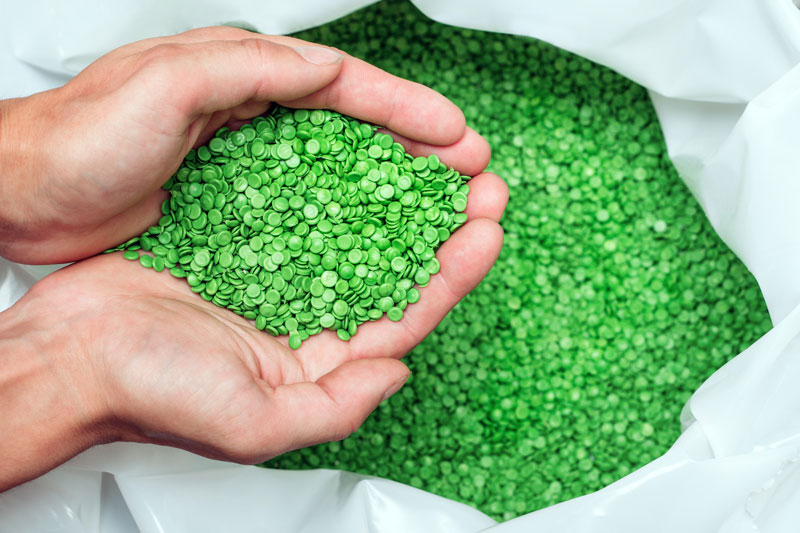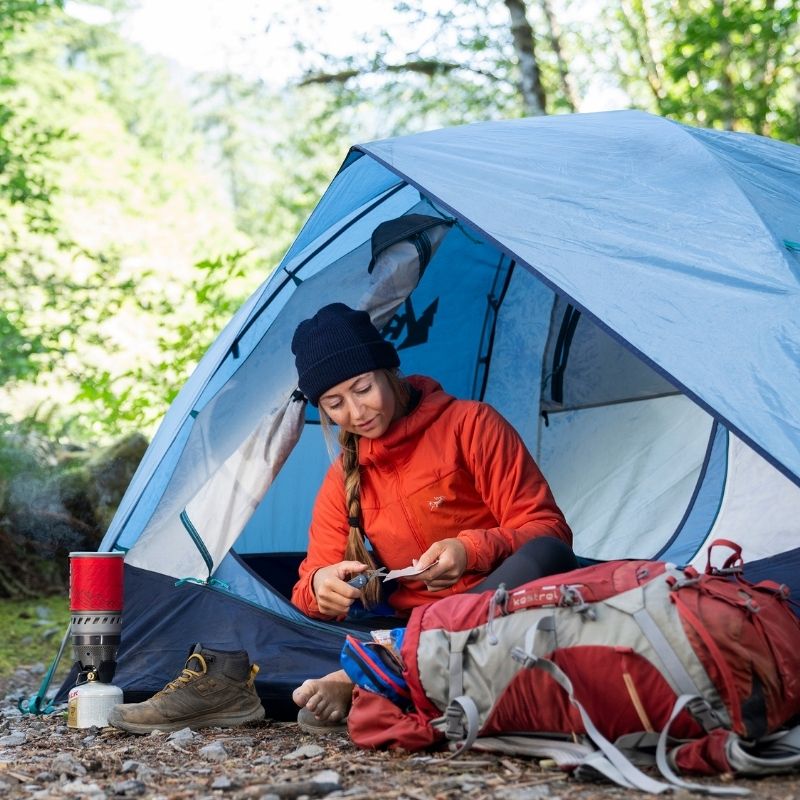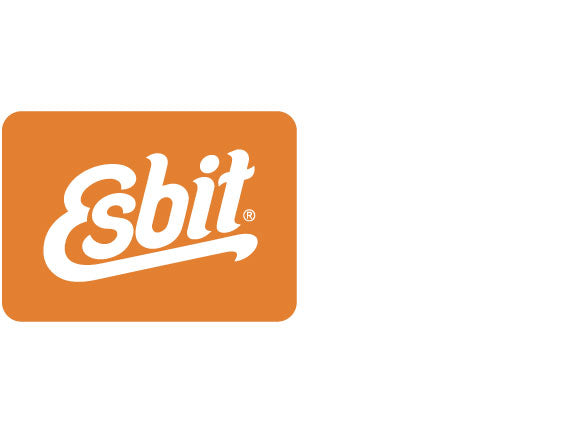Meta: Wish cycling starts with the best of intentions — but it often does more harm than good. Learn more about this hope-driven recycling habit and how to avoid it both at home and on the go.
Have you heard of the Mobius loop? While most aren’t aware of its formal name, this simple, green triangle is one of the most recognizable logos in the world — it’s the universal symbol of recycling.
Its pervasiveness has helped support a recycling culture that’s second nature for many people today. From empty soda bottles to takeaway containers, the Environmental Protection Agency (EPA) estimates that the average American adds about 1.6 pounds to recycling bins each day.
But in spite of the best intentions, only about 35 percent of this total actually gets recycled — and that number plummets to 8 percent when it comes to plastic. Too often, our desire to be eco-conscious leads to a trap of aspirational recycling, also known as wish cycling.
WHY IS WISH CYCLING A PROBLEM?
Wish cycling reinforces a belief that a majority of our waste can be repurposed and reused. Studies show that this practice doesn’t just complicate sustainability efforts. In reality, it contributes to escalating levels of trash.
A researcher from Boston University found that no matter what ultimately happens to an item after we toss it, recycling creates a positive feeling that overcomes negative emotions associated with waste, like guilt. This effect serves as a sort of “moral license.” By believing recycling is an option, we wind up consuming more and more.
EPA figures back up this trend. In 1960 — a decade before the first major recycling programs began in the U.S. — the average American produced about 2.68 pounds of garbage per day. By 2017, that amount almost doubled.
HOW CAN I AVOID WISH CYCLING?
While today’s waste problems are more complex than recycling mistakes, our attitude of wish cycling threatens sustainability efforts on almost every level. By recycling an item that doesn’t belong, we:
- Contaminate items that can be recycled, which means an entire batch can wind up in a landfill
- Overwhelm recycling programs, making them more expensive and less productive
- Waste resources throughout the process, slowing progress
So, how do we kick the wish cycling habit? Whether on the trail or at home, here are five ways you can ensure your actions help — and don’t hamper — the path to more sustainable communities.

BUST COMMON RECYCLING MYTHS
Did you know that most paper coffee cups wind up in a landfill? Thanks to a protective coating that lines the cup, only about one in 400 actually gets recycled. That means an estimated 50 billion head to the dump each year in the U.S. alone.
It’s misunderstandings like this that work to clog up recycling efforts and mitigate their success. That’s why it’s essential to start by learning which materials — in general — are most often accepted by recycling facilities.
According to the EPA, the most common items you can recycle are:
- Cardboard, paper, mail, and food boxes
- Food and beverage cans
- Glass bottles and jars
- Plastic bottles, jug, and bottle caps
It can vary from one facility to the next, but in general, you cannot recycle:
- Plastic bags and flexible packaging like wraps or bags for chips, candy, and baby food
- Anything that can knot or tangle, like hoses, wires, and electric cords
- Containers used to package hazardous materials, like cans for paint, motor oil, or fuel
- Electronics and clothing
- Recyclables soiled with food or liquid

UNDERSTAND YOUR LOCAL RECYCLING RULES
The EPA and other U.S. agencies regulate many types of waste and set recycling goals at a national scale. But each state oversees its own recycling efforts — and in many cases, programs are designed and organized on the local level.
This means that recycling conditions and requirements can vary widely depending on where you are. Make sure you learn the specific rules for your area’s recycling program — and build the habit into your travels. Whether you’re crossing county lines for a hiking trip or heading to a campground in another state, look up the local municipality’s rules to ensure you’re not leaving behind a bigger footprint than you intend.
IMPROVE AN ITEM’S RECYCLABILITY
You can help ensure your good intention doesn’t go to waste — along with your recycling — by building best practices into your routine. In general, you improve the chances that an item will be successfully recycled by:
- Checking that all items are clean and dry, free of food, grease, oil, dirt, or other debris
- Putting no food, liquids, or non-recyclable items in a recycling bin
- Keeping items loose, avoiding plastic bag use
KNOW YOUR PLASTICS
In theory, all plastic can be reused or repurposed. But the process is often expensive, complicated, and results in lower-quality products, all of which give companies little incentive to stop producing new plastic.
That’s why more than 90 percent of all plastic people try to recycle winds up as waste. Plastic bottles or jugs labeled #1 or #2 are generally accepted in most recycling programs. Containers for things like shampoo, soap, and ready-made food — labeled #5 — typically are as well.

However, you can rule out a wide variety of everyday plastic items in your recycling efforts, including:
- Plastic cutlery like knives and forks
- Cling film
- Many types of takeout containers
- Drinking cups
- Single-use shopping bags
- Plastic items like chairs, toys, and electronics
The best way to recycle plastic is to not need to in the first place, particularly by avoiding single-use plastic whenever possible. Instead, invest in high-quality, durable products you can use again and again, from your camping gear to your coffee mug.
Reduce your camping plastic waste: 10 ways to reduce plastic waste while camping
REDUCE AND REUSE
Wish cycling hinges on the idea that recycling is a silver bullet solution to waste management. But poor recycling choices encourage a tragic irony — a cycle of increasing waste.
That’s because recycling is only one part of the equation. Knowing which items can be recycled and how is important, yet it’s reducing the amount of waste we generate in the first place that cuts wish cycling off at the source.
You can do this by making better purchasing decisions, like choosing items with the least amount of packaging or shopping in bulk for things like groceries. Another easy swap is to carry a reusable bag instead of opting for a plastic one — which has a lifespan of about 12 minutes and loads up landfills at a rate of about 200,000 per hour.

It’s not just about reducing the amount of waste you generate at home, either. To-go cups, single-use cutlery, and takeout containers are some of the most common items that get wish cycled. Products like UCO’s Gear’s 6-piece mess kit aim to curb this unsustainable habit by providing a complete, leak-proof dining set that’s on hand when you need it — whether packing your lunch for work or heading into the wild.
Taking reducing waste one step further, UCO has now developed a 100% food-safe plastic that is made of 100% recycled plastic. This removes plastic from the waste stream and makes a reusable product out of it that will further reduce waste when compared to single-use plastics. Check out UCO’s new ECO Ware line of Spork Utensils and Mess Kits made of this new recycled material. (picture below)

If you must recycle an item, just make sure you’re following the requirements for your local area. Still, by choosing high-quality, reusable items for your home and in your rucksack alike, you can stamp out the urge to wish cycle for good.















